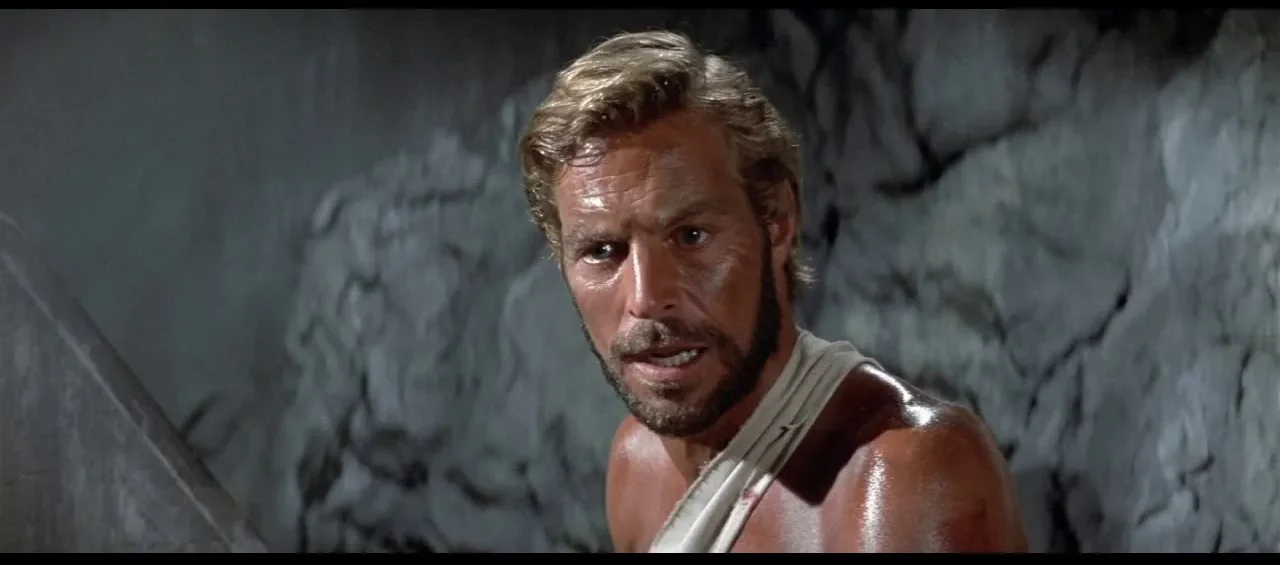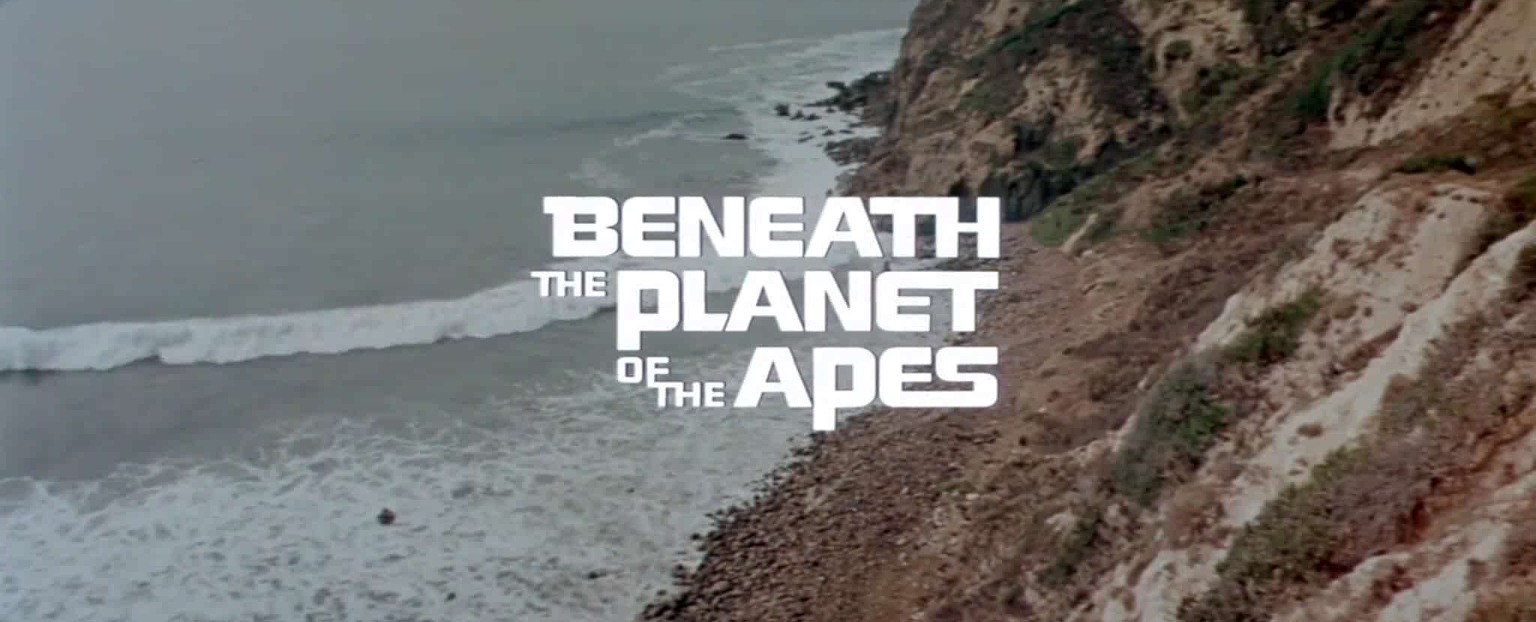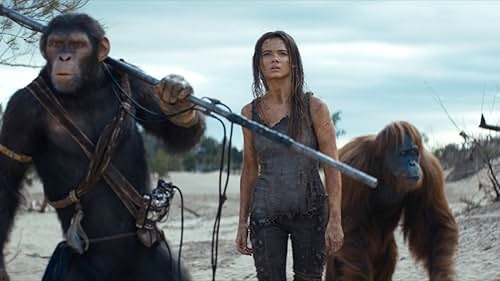The decision to start a film with the final scene of the one before it often comes with risk. Yet, even though it felt like a heavy-handed recap, Taylor and Nova’s discovery of human civilisation’s remains managed to lay a thematic foundation for what would come next.
Back in 1970, sequels weren’t common, especially within a Hollywood system that placed greater value on fresh ideas. This was before the rise of franchises like Star Wars, Star Trek, or Indiana Jones. At that point, science fiction had not gained massive appeal.

The absence of home video might explain the awkward nature of the film’s opening sequence. At that time, 20th Century Fox was struggling financially. After the unexpected success of Planet of the Apes in 1968, the studio suffered a string of flops and hoped that a return to the science fiction genre, with Charlton Heston at the centre, would help them bounce back.
However, putting the sequel together proved challenging. Due to box office disappointments like Hello, Dolly! and Tora! Tora! Tora!, The company was close to collapse. The film’s budget was cut from $5 million to $2.5 million.
Franklin J. Schaffner couldn’t come back as director since he was already working on Patton, so Ted Post was brought in, though he initially had reservations. He didn’t believe the script had a clear direction or much to contribute.
Rod Serling, who had written the first film, presented some early ideas, but they were dismissed quickly. Pierre Boulle, the writer behind the original book, proposed a sequel titled Planet of the Men. His story featured Taylor returning to lead a revolt against the apes in hopes of rebuilding human civilisation.
But the powerful ending of the first movie raised expectations so high that the studio felt Boulle’s vision lacked the kind of surprise needed to hold the audience’s attention a second time. They brought in Paul Dehn to write a fresh script, initially called Planet of the Apes Revisited.
There was an attempt to introduce a character who was part human, part ape, but that idea was abandoned due to fears that it might suggest inappropriate themes and damage the film’s rating.
Another spaceship crashes on Earth far in the future
Beneath the Planet of the Apes doesn’t run as long as the original film; it finishes nearly twenty minutes earlier than the first one’s nearly two-hour length. This sequel skips the gradual tension-building of the previous story, which was likely intentional.
Another spaceship crashes on Earth far in the future, and we meet another stranded astronaut with a beard and rugged appearance. He notices a beautiful mute woman from afar who recognises Taylor, though she doesn’t know his location, and all we’re told is that Taylor has vanished somewhere within the mysterious Forbidden Zone.
The trouble only increased when Charlton Heston refused to commit to a full role in the sequel. He was satisfied with his involvement in the original and wasn’t eager to return.
There was tension between the studio and Heston’s representatives, but eventually he agreed to make a short appearance–only around eighteen minutes of screen time–on the condition that his character would not survive the film. He also made it clear that his payment would go entirely to charity.
Brent, the new lead character, allows us to witness things from a different perspective, and while the script intentionally echoes earlier scenes, the repetition comes off as more playful than tedious. James Franciscus, who was better known for TV roles, was cast to portray a character similar to Taylor.
Fully aware of how thin his character was written, Franciscus helped develop Brent further, and some of the most insightful lines from Brent were influenced by his efforts. Soon after the meeting, Nova (played by Linda Harrison) leads Brent to the apes’ settlement.
Brent’s amazed reaction – “it’s a city of apes!” – has a strange charm. His wonder reminds us that so much about this world remains unexplained. All we know for sure is that long ago, humans brought about their downfall.
Even though the storyline repeats certain elements – another man from the past encounters a planet ruled by apes – things progress in very different ways.
A growing militarism and anti-war theme within the apes’ community
Brent observes a council meeting where General Ursus (played by James Gregory, who took the role after Orson Welles declined) and other gorilla soldiers demand a strike on the Forbidden Zone, as a scouting group never returned. Military rule takes over in Ape City.
A peaceful demonstration is almost crushed by force before Ursus decides instead to imprison the protestors. Doctor Zaius (Maurice Evans), who represents both faith and science, chooses to join the gorilla army heading to the Forbidden Zone, hoping that his presence will give him some influence, even if his authority has been weakened.
The growing militarism and anti-war theme within the apes’ community, even though it becomes less visible once the location changes, draws clear lines to the social tensions of the late 1960s.
The swift dismissal of the protestors as the gorillas prepare for conflict appears to reflect the political climate of 1968, especially the election of Richard Nixon, whose victory was driven by many middle-class voters tired of civil unrest.
Brent and Nova manage to contact Zera (Kim Hunter) and Cornelius (played by David Watson, marking the only time Roddy McDowall didn’t play the role in the original five films). After briefly parting ways, the humans are captured again, only for Zera to step in once more to help them.
Unfortunately, that’s the last we see of her, and her standout moment is a light-hearted yet awkward scene that hints at domestic tension. Once Brent and Nova reach an underground train station, Dehn’s script starts to pick up pace.
A horseback chase sequence brings Brent to the same revelation Taylor had at the end of the last film. But this time, it feels fresh due to the unique set design and new shooting locations. At this point, the similarities fade.
The idea that a group of mutated humans lives underground and engages in mental warfare, all while pretending to promote peace and worship a nuclear bomb, is both dark and ironic.
Their way of justifying violence, removing guilt, and framing their decisions through language tricks, powerful weapons, and extreme beliefs draws attention to the disturbing world Taylor and Brent come from.
Just eight years after the Cuban Missile Crisis, and with memories of Hiroshima still fresh, Dehn tapped into those fears, especially his emotional scars from the 1945 bombing. Captured once again by the mutant society below the surface, Brent is forced to disclose the apes’ upcoming attack.
The final clash and the explosive conclusion
The heavy symbolism in Beneath becomes clear, from references to the alpha and the omega to the mirror image of apes charging in guns blazing, all echoing Doctor Zaius’s warning about mankind’s destructive habits.

When Brent and Taylor are reunited, they celebrate briefly in their jail cell, only for the mutant behind the door to turn their joy into a brutal fight. The forced combat, though intense and bloody, ends when the mutant throws in a weapon and then inexplicably stays locked inside instead of leaving them alone with it.
As the apes storm the underground domain, they destroy human relics and execute any mutants they encounter. The showdown occurs in a massive cathedral where a long-dormant doomsday device has now been activated. The apes quickly take over.
There was an alternate version where Taylor, Nova, and Brent manage to escape just before the bomb, not one that could wipe out the planet, goes off. They reach the ape city and reunite with Zera and Cornelius. Human prisoners are released, and a century later, apes and humans are shown living peacefully together.
But that is not the path this story takes. The consequences that follow are shaped by ignorance, blind belief, and the unsettling similarities between humans and apes. Nova loses her life during an attempted jail break. Taylor and Brent try to prevent the apes from triggering the bomb, but don’t survive.
The gorilla soldiers drag the weapon down carelessly. With his dying breath, Taylor presses the red button. Beneath the Planet of the Apes was commercially successful, bringing in $19 million from a $3 million budget and topping the U.S. box office for two weeks.
However, critics were less impressed. The film’s storyline was too direct, and the drop in quality compared to its predecessor was hard to ignore. Still, it connects with the first film in its way and offers a powerful close to the tale, one where everything we thought we understood is wiped away without hesitation.



